
Roots
The quiet hours of sleep, meant for renewal and repose, can sometimes become an unseen battleground for our curls. We settle into our beds, seeking comfort, yet the very surfaces we rest upon can, with each gentle shift and turn, exert subtle forces upon our hair. This continuous, seemingly innocuous contact can lead to what we term ‘friction,’ a force that, over time, can disrupt the delicate architecture of each strand. Understanding the foundational elements of our hair, its microscopic design, and how it interacts with the world around it, especially during the stillness of night, illuminates why certain materials offer a sanctuary for our curls.

The Hair Strand’s Outer Layer
At its very core, a single strand of hair is a marvel of biological engineering. Its outermost layer, the Cuticle, comprises multiple layers of overlapping scales, akin to shingles on a roof. These scales, typically six to ten layers deep, are positioned with their free edges pointing towards the hair’s tip. This specific arrangement is crucial for hair’s protective functions and its inherent resistance to certain movements.
When hair is healthy, these cuticle scales lie flat and smooth, creating a surface that reflects light beautifully and feels soft to the touch. This smooth alignment is what allows individual strands to glide past one another with minimal resistance.

Friction’s Microscopic Reach
The issue of friction arises when these normally placid scales are disturbed. As hair rubs against a surface, particularly one with a rough texture, these delicate cuticle scales can lift, chip, or even break. Think of a wooden surface, seemingly smooth to the naked eye, but under a microscope, revealing countless peaks and valleys.
Similarly, many common fabrics, when viewed at a microscopic level, possess a surface topography that can snag and abrade the hair’s cuticle. This constant, low-level abrasion during sleep, as one shifts position up to 40 times a night, contributes to damage that accumulates silently.
The subtle, continuous rubbing of hair against sleep surfaces can, over time, disrupt the delicate cuticle scales, leading to wear and breakage.
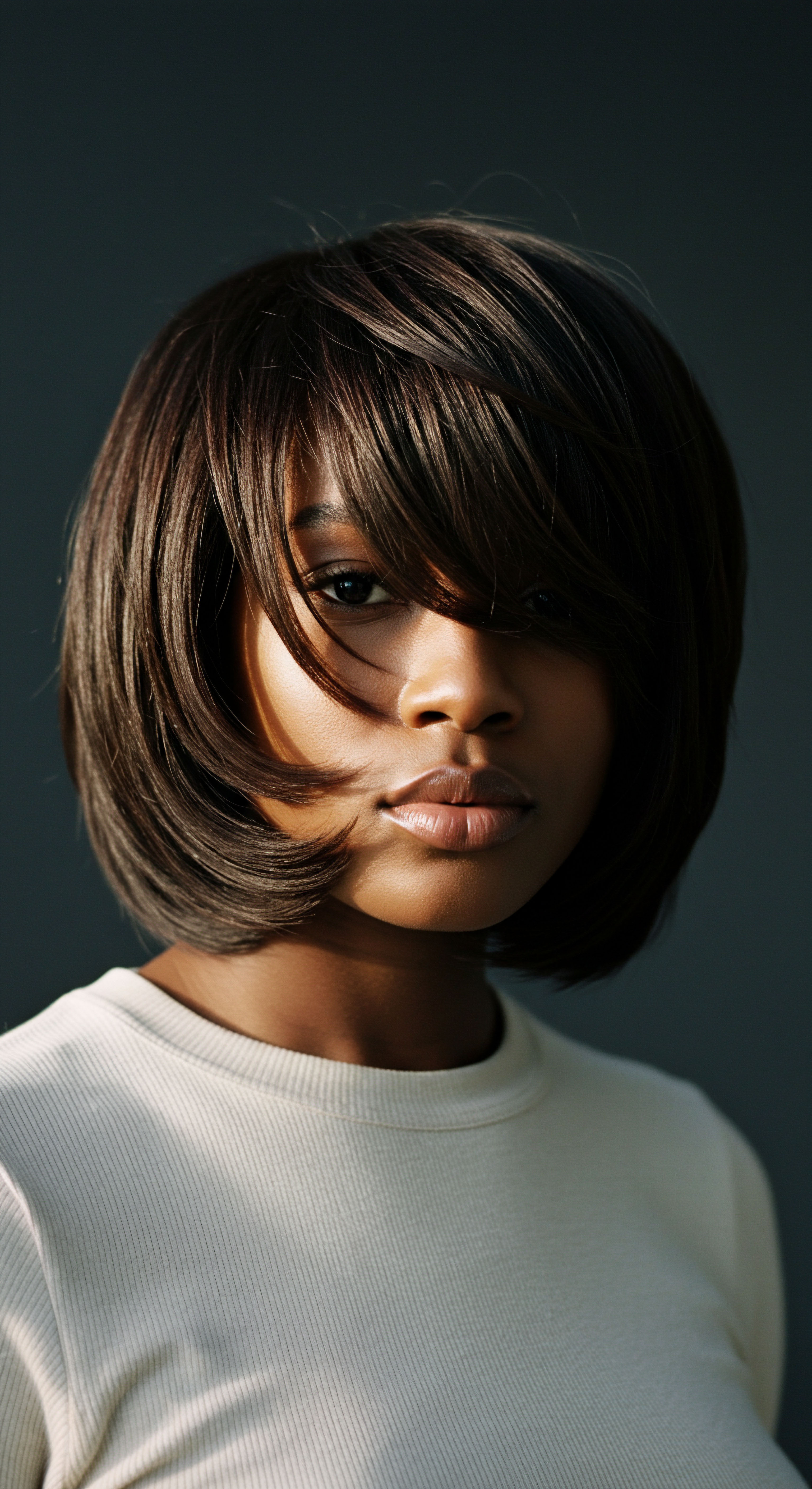
The Unique Architecture of Curly Hair
Curly hair, with its inherent bends and coils, presents a unique challenge to friction. Unlike straight strands that offer a relatively uniform surface for contact, curly hair has multiple points of curvature and intersection. These natural curves mean that more of the hair’s surface is in direct contact with the pillowcase, and the coils themselves can interlock, increasing the likelihood of tangles and mechanical stress. The very structure that gives curly hair its distinct beauty also renders it more susceptible to frictional damage during sleep.
The varying angles at which individual strands meet and rub against each other, or against a pillow surface, mean that the scales are not always interacting in their most ‘glide-friendly’ direction. This can lead to increased friction, especially in environments where humidity might cause the cuticle edges to lift further, exacerbating the problem.
Understanding this fundamental interplay between hair’s physical structure and the surfaces it encounters is the first step toward preserving its vitality. The choice of sleep material, therefore, becomes not merely a preference for comfort, but a strategic decision rooted in hair science.
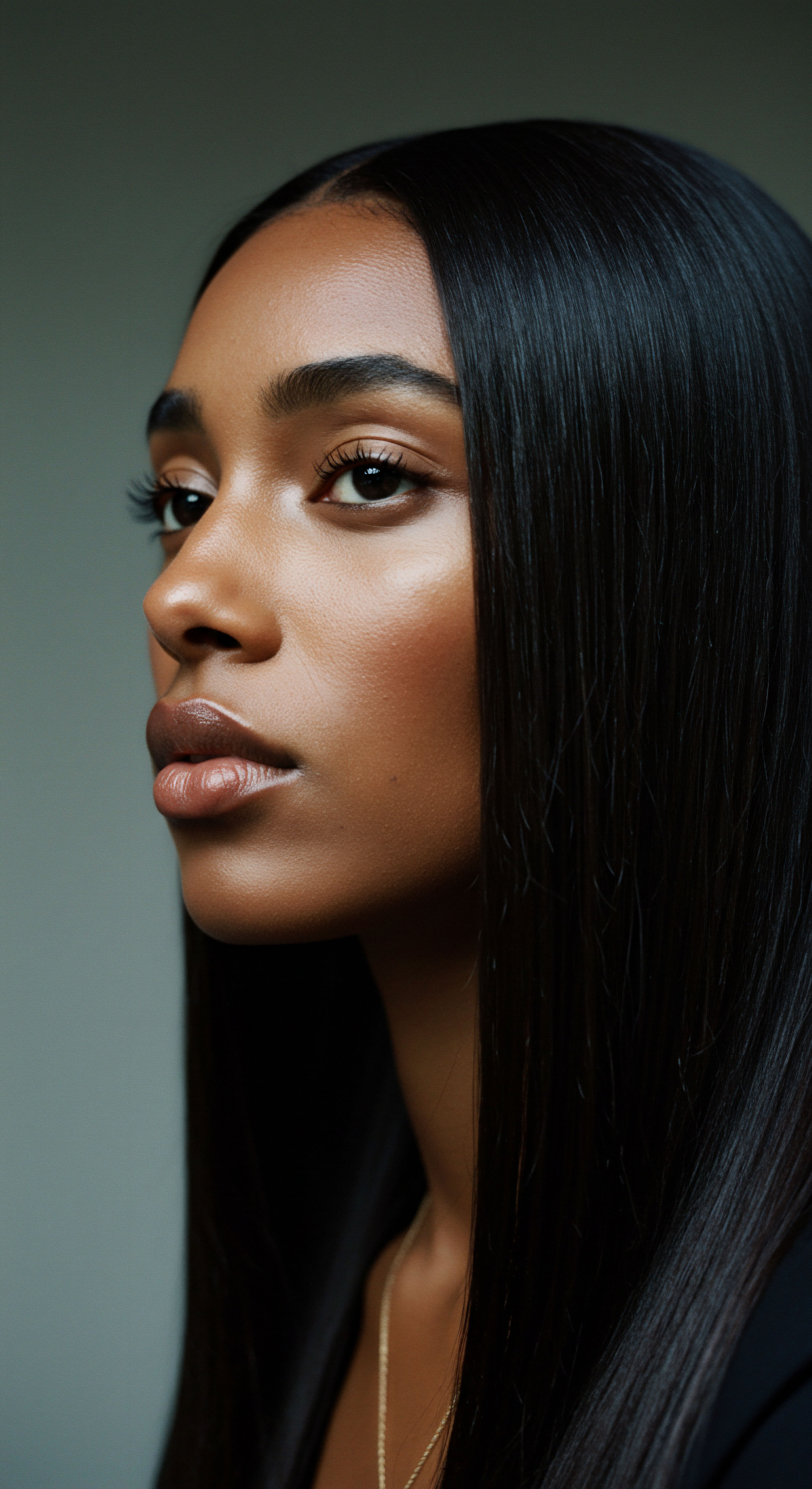
Ritual
Having understood the foundational science of hair friction, we turn now to the practices that can transform our nightly rest into a period of genuine care for our curls. The transition from awareness to action begins with thoughtful choices about the materials that cradle our hair as we sleep. This is where the wisdom of generations meets modern understanding, shaping rituals that prioritize preservation over incidental damage.

Which Materials Offer the Gentlest Embrace for Curly Hair?
When seeking to minimize friction for curly hair during sleep, the surface quality of the material is paramount. The goal is to find textiles that allow hair strands to glide effortlessly, rather than snagging or creating resistance. This quality is often quantified by a material’s Coefficient of Friction. A lower coefficient indicates a smoother surface with less drag.
- Silk ❉ This natural protein fiber is widely recognized for its exceptionally smooth surface. Its fibers possess a very low coefficient of friction, typically ranging from 0.1 to 0.15. This characteristic allows hair to slide across it with minimal resistance, significantly reducing tangles, breakage, and frizz. Beyond its smoothness, silk also absorbs less moisture than many other fabrics, helping hair retain its natural hydration and products applied before bed. This dual benefit makes it a preferred choice for many seeking to protect their textured strands.
- Satin ❉ Often confused with silk, satin refers to a specific weave pattern, not a fiber type. While satin can be made from various fibers, including polyester or nylon, satin weaves typically create a smooth, glossy surface. When satin is made from synthetic fibers, it offers a more affordable alternative to silk, still providing a significant reduction in friction compared to cotton. The key is the smooth, tightly woven surface that allows hair to move freely.
- Cotton ❉ Conversely, cotton, while breathable and absorbent, has a higher coefficient of friction, approximately 0.3. Its natural fibers, when viewed microscopically, have a more irregular, porous surface that can create drag and absorb moisture from hair. This increased friction can lead to tangles, frizz, and the lifting of cuticle scales, contributing to dryness and breakage over time. While comfortable, traditional cotton pillowcases can be detrimental to curly hair health during sleep.
The distinction between these materials is not merely theoretical; it manifests in the morning experience of hair. Less friction translates to fewer knots, reduced frizz, and styles that maintain their definition for longer periods.
The choice of sleep surface, particularly smooth materials like silk and satin, significantly impacts hair health by minimizing damaging friction.
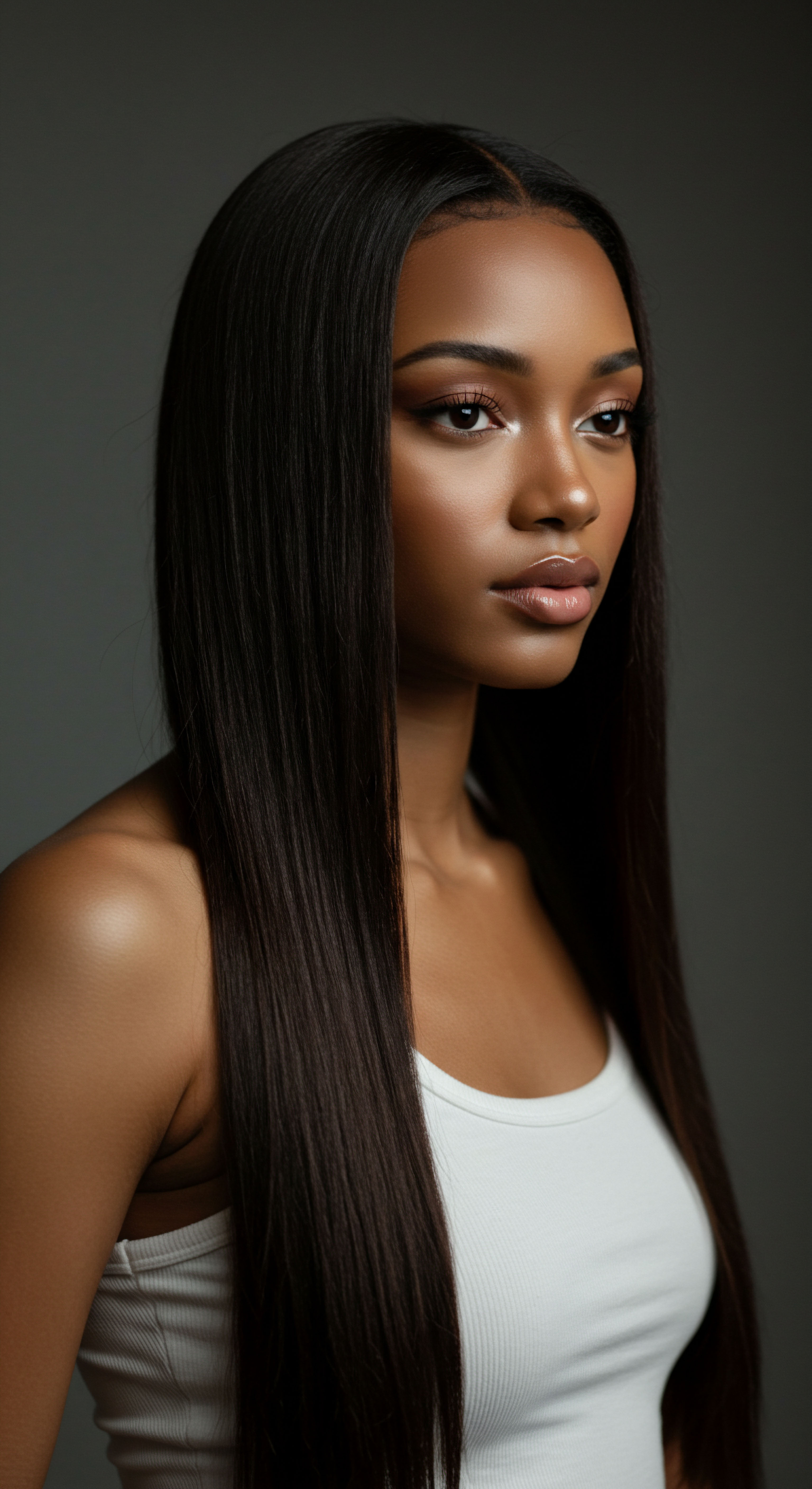
Practical Applications and Nightly Habits
Beyond the choice of material, the manner in which hair is prepared for sleep also plays a pivotal role in minimizing friction. These practices, often passed down through generations, are rooted in a deep understanding of hair’s vulnerability.

How Can Nightly Routines Further Protect Curly Hair?
Incorporating protective styles before bed can significantly reduce the surface area of hair exposed to friction.
A loose braid, a gentle bun at the crown of the head, or even a pineapple style (where hair is gathered loosely at the top of the head) can help contain curls and prevent them from rubbing excessively against the sleep surface. These styles minimize individual strands from snagging on each other or on the pillowcase, reducing the overall friction experienced by the hair.
Furthermore, ensuring hair is dry before sleep is a subtle yet significant step. Wet hair is inherently more fragile and susceptible to damage. The cuticle layers are softened and more prone to lifting when wet, making them even more vulnerable to friction and breakage from tossing and turning. Allowing hair to air dry or using a gentle, cool setting on a blow-dryer before bed helps solidify the cuticle, making it more resilient to the mechanical stresses of sleep.
The table below provides a comparative overview of common sleep materials and their general impact on curly hair:
| Material Silk |
| Friction Level Very Low |
| Moisture Absorption Low |
| Benefits for Curly Hair Minimizes frizz, tangles, breakage; retains hydration |
| Considerations Higher cost, requires delicate care |
| Material Satin (Synthetic) |
| Friction Level Low |
| Moisture Absorption Moderate |
| Benefits for Curly Hair Reduces frizz, tangles, breakage; more affordable |
| Considerations Can be less breathable than silk |
| Material Cotton |
| Friction Level High |
| Moisture Absorption High |
| Benefits for Curly Hair Breathable, widely available, inexpensive |
| Considerations Causes frizz, tangles, dryness, breakage |
| Material Bamboo (Viscose) |
| Friction Level Moderate to Low |
| Moisture Absorption Moderate |
| Benefits for Curly Hair Softer than cotton, some friction reduction, breathable |
| Considerations Varies by weave, not as smooth as silk |
By consciously choosing materials that respect the hair’s delicate structure and adopting mindful preparation routines, we transform sleep from a potential source of damage into a restorative experience for our curls. This shift in ritual acknowledges hair as a living part of our being, deserving of thoughtful, consistent care.

Relay
Moving beyond the immediate and tangible, our exploration deepens into the interwoven narratives of hair protection during sleep—a convergence of science, cultural legacy, and evolving understanding. This segment peels back layers to reveal the profound interconnectedness of material science, historical practices, and the very perception of hair health, inviting a contemplation of how these elements shape our modern approach to nocturnal hair care.

Historical Reverberations of Hair Protection
The practice of covering hair during sleep is not a modern innovation, but rather a custom with deep historical roots, particularly within Black and mixed-race communities. For generations, women have understood the necessity of protecting their hair from the rigors of nightly movement and harsh fabrics. Headwraps, bonnets, and scarves were not merely accessories; they were vital tools for preserving hair health, maintaining styles, and extending the longevity of intricate preparations.
This tradition, often passed from mother to daughter, served a dual purpose ❉ practical and cultural. Practically, it shielded hair from the abrasive surfaces of common bedding, preventing tangles and moisture loss. Culturally, these coverings became symbols of identity, self-care, and a quiet resistance against societal pressures that often undervalued natural hair textures. The nightly wrapping ritual, therefore, is a profound act of self-love and preservation, linking contemporary practices to ancestral wisdom.

What Does the Science Say About Microscopic Damage?
While the general understanding of friction’s harm is widespread, a closer scientific examination reveals the subtle yet significant mechanisms at play. The tribology of hair—the study of friction, lubrication, and wear of hair surfaces—provides a detailed lens. Hair’s outermost cuticle, composed of overlapping scales, creates a directional friction. This means that hair experiences different levels of resistance depending on the direction it slides, making it particularly vulnerable to random, multi-directional rubbing during sleep.
A study investigating the tribological properties of hair fibers highlighted that even at relatively low compressive loads, continuous sliding can lead to Cuticle Flattening and, at higher loads or with prolonged cycles, substantial Cuticle Wear and Fiber Damage. The research showed that hair fibers with their natural sebum or those treated with conditioners exhibited significantly lower coefficients of friction—at least 25% lower—compared to hexane-cleaned fibers. This underscores the combined importance of both surface lubrication (from natural oils or products) and the external material in mitigating damage.
Furthermore, a less commonly discussed aspect involves the impact of static electricity. Polyester, for instance, has been observed to generate significant electrostatic potentials when rubbed against hair, which can increase friction and further disrupt the cuticle. A study on headscarf textiles found that polyester generated the highest voltage when slid against hair, followed by cotton, while cotton displayed the highest friction coefficient overall. This complex interplay of mechanical friction and electrostatic charge contributes to the overall stress placed on hair during sleep.
Hair’s unique cuticle structure causes directional friction, making it susceptible to damage from multi-directional rubbing and static charges generated by certain textiles during sleep.
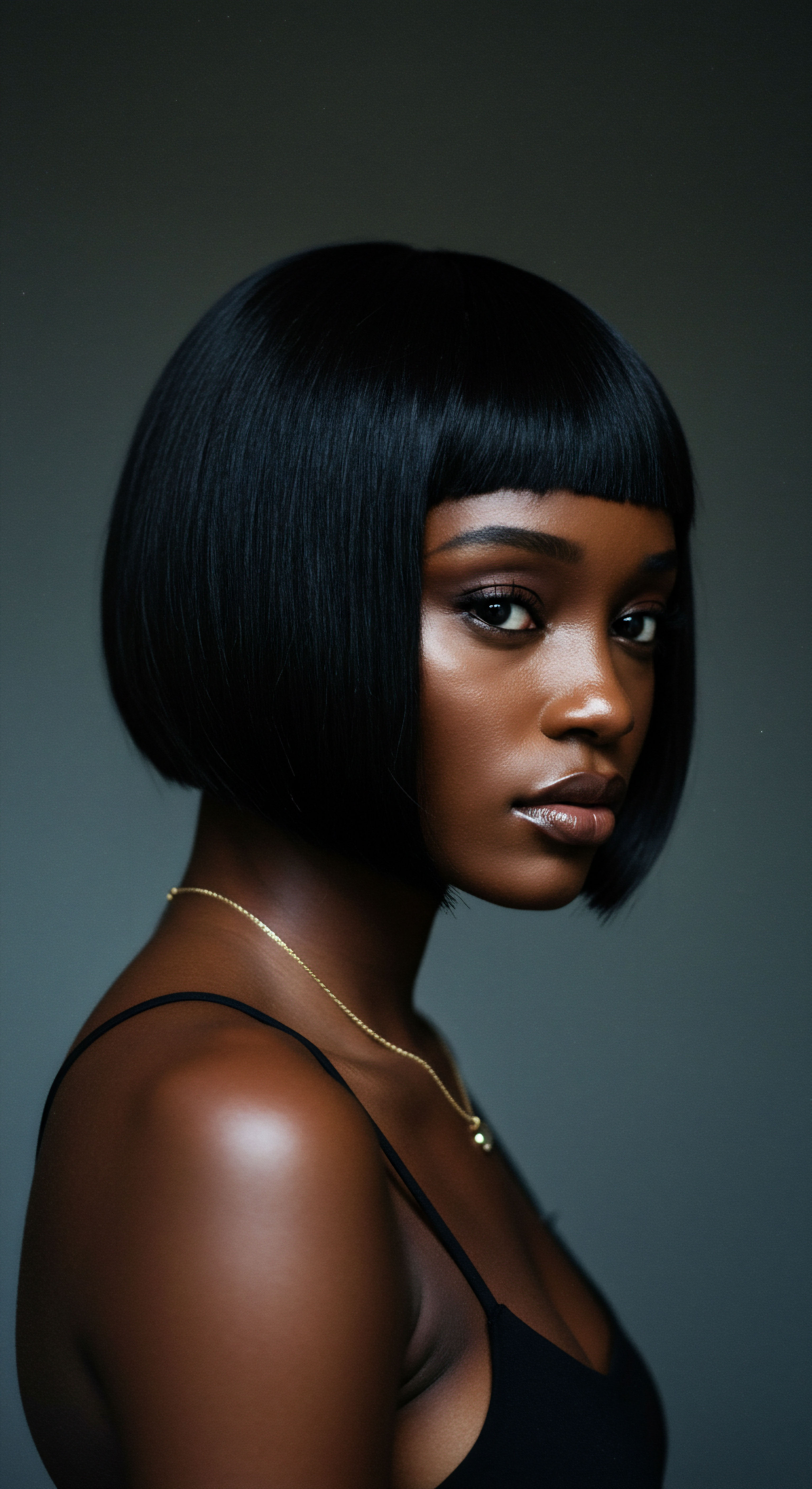
The Silent Language of Hair Damage
The effects of friction are not always immediately visible. They accumulate over time, manifesting as increased frizz, tangles, split ends, and a general dullness. The continuous mechanical stress can also contribute to hair thinning or breakage, particularly in areas of constant contact with the pillow. While sleeping on one side may not directly cause hair loss, the consistent pressure and friction on that area can contribute to breakage or even a form of hair loss known as traction alopecia over time.
The concept of “sleep wrinkles” on skin has a parallel in hair; the repetitive creasing and compression against a rough surface can alter the hair’s shape and integrity. This is especially true for curly hair, where the natural coil pattern can be distorted, leading to what is commonly known as “bed head”.
Beyond simply reducing friction, materials like silk offer additional benefits. Silk proteins, such as sericin and hydrolyzed silk proteins, are utilized in hair products for their ability to bind moisture, improve elasticity, and strengthen strands. While a silk pillowcase does not directly deposit these proteins onto the hair in the same way a topical product would, its smooth surface preserves the hair’s existing moisture and integrity, allowing any applied products to remain on the hair rather than being absorbed by the pillow.
The profound wisdom of protective hair practices, passed through generations, finds its scientific validation in the microscopic interactions of hair and textiles. The choice of sleep surface, therefore, is not merely about comfort or luxury; it is a conscious decision to respect the delicate nature of textured hair, honoring its resilience and preserving its inherent beauty against the unseen forces of friction.
| Textile Material Silk |
| Approximate Coefficient of Friction (μs) 0.1 – 0.15 |
| Observed Hair Impact Significantly reduces tangling, frizz, and breakage. Maintains hair hydration. |
| Textile Material Polyester |
| Approximate Coefficient of Friction (μs) 0.21 (specific blend, Slipssy); 0.1 (head scarf) |
| Observed Hair Impact Can be low friction, but may generate static charge. Variable based on weave. |
| Textile Material Cotton |
| Approximate Coefficient of Friction (μs) 0.3; 1.17 (general pillowcase); highest (head scarf) |
| Observed Hair Impact High friction, causes tangles, frizz, dryness, and cuticle damage. |
| Textile Material Nylon |
| Approximate Coefficient of Friction (μs) Higher than polyester, lower than cotton (head scarf) |
| Observed Hair Impact Can generate static. Friction varies with weave. |
This table highlights the tangible differences in how various materials interact with hair, providing a scientific basis for traditional practices.

Reflection
As our exploration of minimizing friction for curly hair during sleep draws to a close, we are left with a deeper appreciation for the intricate dance between our strands and the world, even in slumber. The journey from the microscopic architecture of a single hair fiber to the collective wisdom of ancestral practices reveals a truth both scientific and deeply personal. Protecting our curls at night transcends mere cosmetic concern; it becomes an act of intentional care, a quiet affirmation of self. It is a testament to the power of small, consistent choices, guiding us toward a harmonious existence with our hair, allowing its natural beauty to unfold without the unseen battles of the night.
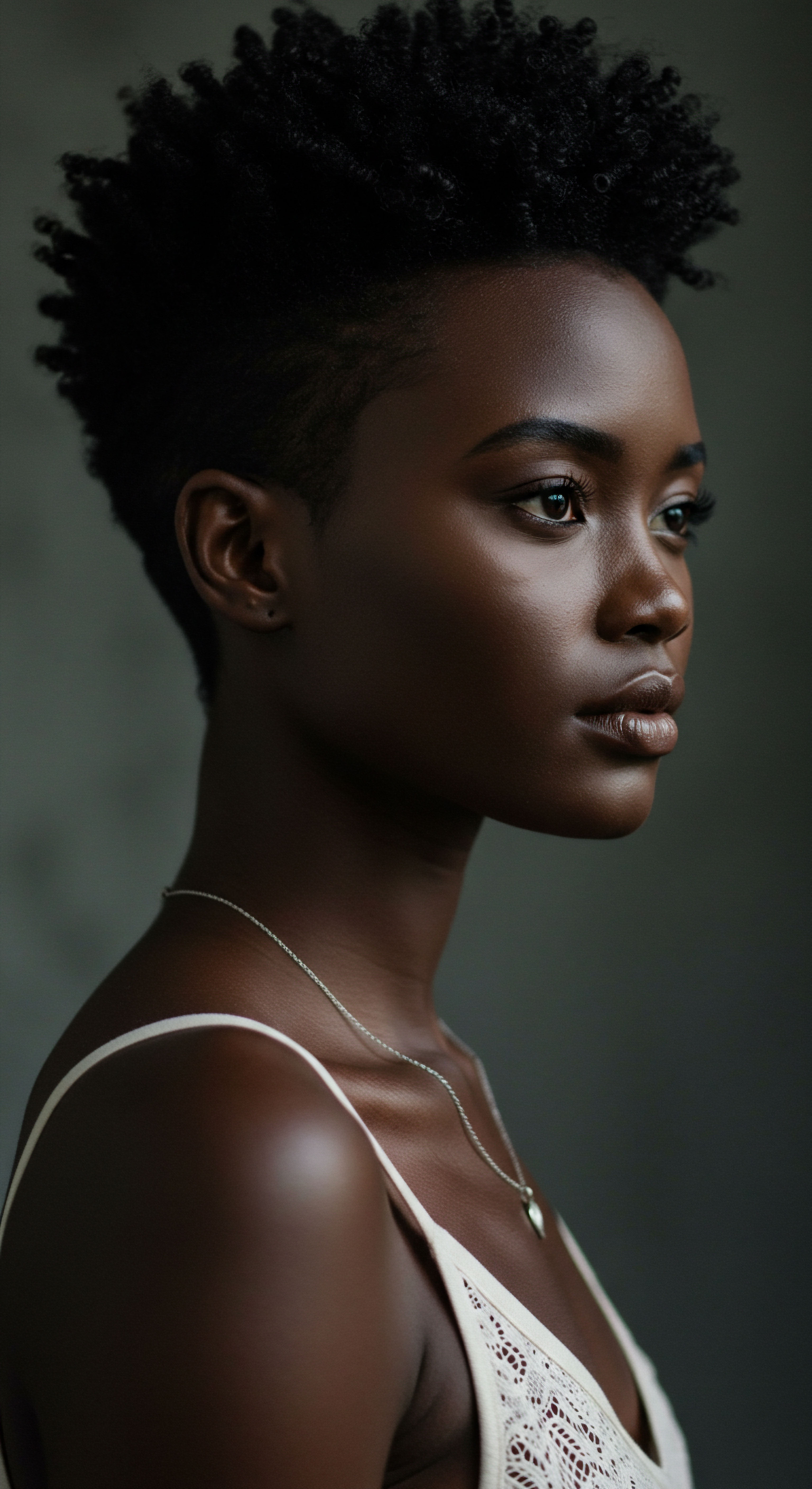
References
- Slipssy’s First-Night Effect ❉ How Reducing Friction Transforms Your Hair Overnight. (2025).
- Silk for Skincare and Haircare | Lab Muffin Beauty Science. (2020).
- How a Hair Wrap Routine Protects More Than Just My Hair | Sleep.com. (2021).
- Silk Sleepwear vs. Cotton Sleepwear – Elle Silk.
- Significance of headwraps | Hair care – Obé Headwear. (2024).
- Silk Proteins – Best Ingredients for Hair – Prose.
- Silk protein – ELLEMENTAL.
- How the Silk Protein Sericin Helps Hair and Skin – Blissy. (2022).
- Hydrolyzed Silk Protein ❉ The Secret to Stronger, Shinier Hair. (2024).
- Silk Protein Anti-Frizz Straightening Protein, 120ml – دار الأميرات – أكبر تجمع لمنتجات العناية.
- Tribology in the Hair Surface and Tactile Perception | Request PDF – ResearchGate.
- What are the benefits of using cotton or silk bed sheets and pillowcases on your skin and hair? – Quora. (2024).
- Tribology of Hair Conditioners – Tribonet. (2023).
- Historical Hair Care Grew My Hair to Hip Length! Here’s How – YouTube. (2022).
- Impact of Processing Conditions on Rheology, Tribology and Wet Lubrication Performance of a Novel Amino Lipid Hair Conditioner – MDPI.
- Nanoscale Friction of Biomimetic Hair Surfaces – bioRxiv. (2022).
- Silk vs Cotton Pillowcases ❉ Which Is Best for Your Hair? – Lordhair.com. (2024).
- Night-Time Hair Routine – Victorian And Edwardian Hair Care – Sew Historically. (2015).
- Cotton vs. Silk Pillowcases for Hair ❉ Which Is Better?.
- Does Sleeping on Only One Side Cause Hair Loss? – Esteworld.
- The History of Headwraps and Black Culture – sonson. (2021).
- How to Prevent Split Ends While Sleeping – Little Extra. (2023).
- Polyester but not cotton or wool textiles inhibit hair growth – PubMed.
- Inversion of friction anisotropy in a bio-inspired asymmetrically structured surface – PMC. (2018).
- Friction and wear of human hair fibres – Open Research Online. (2016).
- Hair Damage and Wave Efficiency according to the Degree of Alkalinity in Permanent Wave.
- ANALYSIS AND QUANTIFICATION OF HAIR DAMAGE ❉ PROGRESS REPORT NO. 32.
- The Surprising Connection Between Pillows and Hair Loss – DXB News Network.
- a history question about hair ❉ r/CallTheMidwife – Reddit. (2024).
- Brillouin microscopy for the evaluation of hair micromechanics and.
- Techniques Used for Hair Style Maintenance while Sleeping May Be a Risk Factor for Traction Alopecia – PMC. (2021).
- Does Sleeping on Only One Side Cause Hair Loss? – Dr. Terziler.
- The Link Between Sleep Position and Hair Damage ❉ What You Need to Know – Silkie.
- Fiber and Hair Analysis – CRAIC Technologies.
- Head Wraps and Culture ❉ What You Need to Understand – Turbie Twist.
- Protective hairstyle – Wikipedia.
- New Insight on the Friction of Natural Fibers. Effect of Sliding Angle and Anisotropic Surface Topography | Request PDF – ResearchGate. (2024).
- Silk Hair Wraps in Different Cultures ❉ A Global Perspective – Esme Luxury. (2024).
- Translating the Human Hair Surface State into Sound (IFSCC BASIC RESEARCH AWARD WINNER ORIGINAL PAPER) – ResearchGate. (2017).
- FRICTION COEFFICIENT AND ELECTRIC STATIC CHARGE OF HEAD SCARF TEXTILES – EKB Journal Management System.
- Friction and wear studies of human hair and skin | Request PDF – ResearchGate.
- Can The Way You Sleep Cause Hair Loss? – – hair replacement.
- Hair and Textiles | PDF – Scribd.
- Human Hair and the Impact of Cosmetic Procedures ❉ A Review on Cleansing and Shape-Modulating Cosmetics – MDPI.
- 7 Bad Habits that Damage Your Hair – OnSkin. (2024).
- Hair Friction – TRI Princeton.
- Part I—A study on the relationship between physical properties and frictional characteristics of cotton fibres and yarns.
- Friction coefficient of artificial hair one with different types of textiles. – ResearchGate.